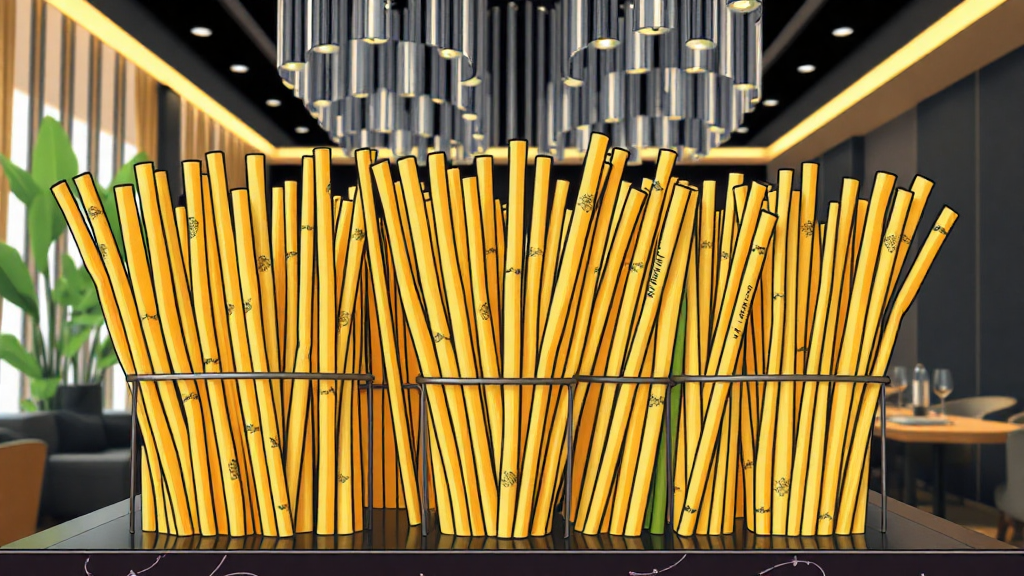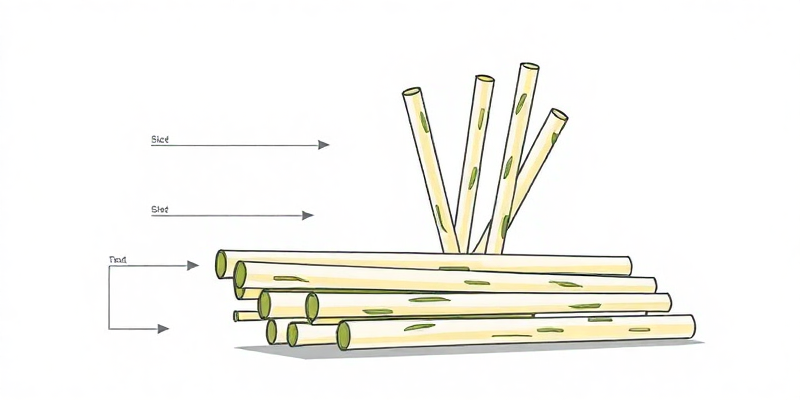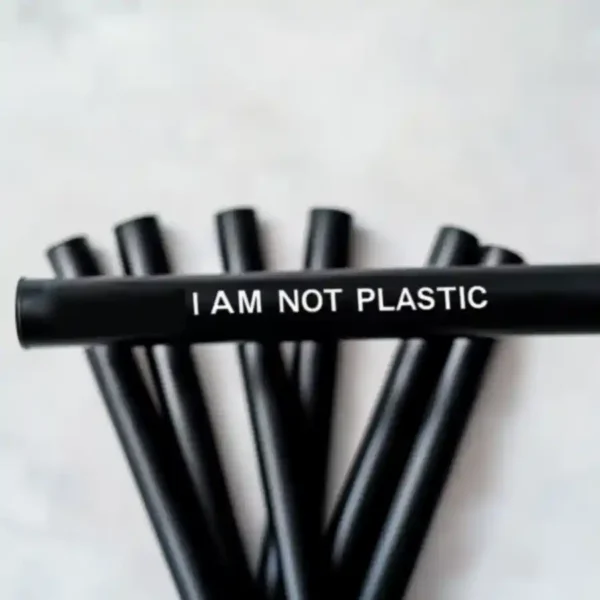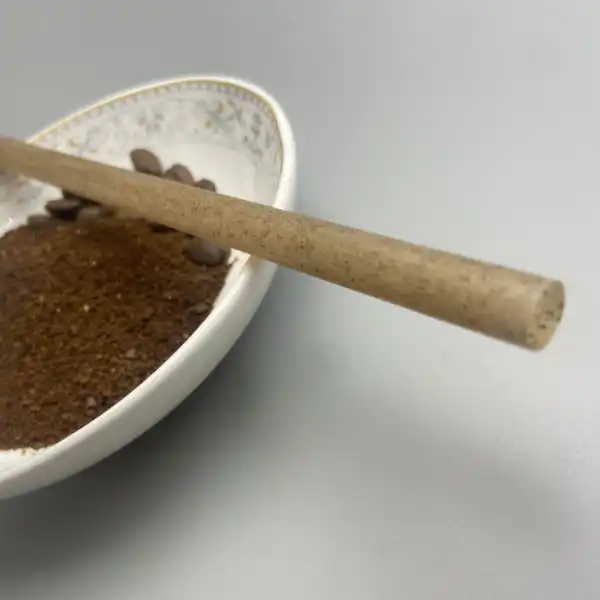Sugarcane Straws: Sustainable, Certified B2B Solutions

Introduction: Plastic Bans and Sugarcane Straws Eco-Friendly Drinking Benefits

Picture this: It’s Monday morning, and you’ve just received an email notification about your city’s new single-use plastic ban taking effect next month. As a busines owner in the food service industry, you’re suddenly faced with the urgent need to replace thousands of plastic straws. Sound familiar?
This scenario is playing out acros the globe as governments, from local municipalities to entire nations, are implementing strict regulations against single-use plastics. The European Union’s Single-Use Plastics Directive, California’s Assembly Bill 1884, and similar legislation in over 60 countries have created a new busines reality where sustainable alternatives aren’t just nice-to-have—they’re essential for continued operation.
Enter sugarcane straws—an increasingly popular solution that’s helping businesses navigate this changing regulatory landscape while simultaneously meeting growing consumer demand for eco-friendly options. These plant-based alternatives offer remarkable durability and performance while addressing the environmental concerns that prompted plastic bans in the first place.
Unlike paper straws that often become soggy mid-drink or PLA straws that require industrial composting facilities, sugarcane straws provide a genuine solution that meets both practical busines needs and environmental goals. They’re manufactured from bagasse—the fibrous byproduct of sugarcane processing that would otherwise be discarded—creating a virtuous cycle of resource utilization that transforms agricultural waste into valuable products.
For hotels, restaurants, cafes, bars, and distributors, the transition to sugarcane straws represents more than regulatory compliance—it’s an opportunity to align with evolving consumer values while maintaining the quality experience your customers expect. With 78% of global consumers now believing that businesses bear as much responsibility as governments for enacting positive environmental change, your straw choice becomes a visible symbol of your brand’s commitment to sustainability.
Regulatory Compliance: Certifications for Sugarcane Straws Eco-Friendly Drinking

In today’s complex regulatory environment, simply offering “eco-friendly” products isn’t enough—particularly for businesses operating acros multiple jurisdictions. Proper certifications aren’t just bureaucratic hurdles; they’re essential busines protections that verify product safety, environmental claims, and compliance with increasingly stringent regulations.
For sugarcane straws, two certifications stand out as particularly crucial: FDA approval and LFGB certification. FDA certification ensures your sugarcane straws meet strict food safety standards, critical for any product that comes into direct contact with food or beverages. The FDA’s comprehensive guidelines for food contact materials evaluate everything from material composition to potential chemical leaching, providing assurance that products won’t introduce harmful substances into consumables.
Similarly, LFGB certification (the German Food, Articles of Daily Use and Feed Code) represents one of the world’s most rigorous standards for food-contact products, often exceeding even FDA requirements. For businesses serving European markets, this certification isn’t optional—it’s a prerequisite for market acces.
According to a 2022 report by busines consultancy Deloitte, businesses facing non-compliance with food contact material regulations face an average penalty of $28,000 per violation, not counting potential legal liabilities and reputational damage. Moreover, establishments using non-certified products face increased scrutiny during health inspections, potentially leading to operational disruptions and negative publicity.
For multi-location businesses or those operating internationally, navigating these regulations becomes exponentially more complex. Working with certified sugarcane straw suppliers ensures consistent compliance acros all locations, simplifying your supply chain management and reducing regulatory exposure. By choosing fully certified products, you’re not just checking a compliance box—you’re implementing a strategic risk management approach that protects your busines while demonstrating commitment to customer safety.
How Sugarcane Straws Eco-Friendly Drinking Compares to Other Eco Alternatives

With the market flooded with sustainable straw alternatives, making the right choice requires understanding how each option performs in real-world busines applications. Sugarcane straws offer distinct advantages compared to other eco-friendly alternatives, particularly when considering the full spectrum of operational, customer experience, and environmental factors.
| Feature | गन्ने के तिनके | कागज के तिनके | PLA Straws | Glas/Metal Straws |
|---|---|---|---|---|
| ——— | —————— | ————– | ———— | ——————- |
| Durability | 2-3 hours in liquids | 30-60 minutes before softening | Good until heat exposure (above 105°F) | Indefinite |
| Customer Experience | Natural feel, no taste transfer | Often affects drink taste, becomes soggy | Similar to plastic, can affect taste | Cold/hot temperature transfer to lips |
| Composting Requirements | Home compostable (30-90 days) | Home compostable (30-90 days) | Industrial facilities only | Reusable, not compostable |
| Production Sustainability | Upcycled agricultural waste | Requires fresh wood pulp, chemical processing | Corn-based, uses agricultural land | Energy-intensive manufacturing |
| Cost per Unit (Wholesale) | $0.03-0.07 | $0.02-0.05 | $0.04-0.08 | $0.75-3.00 |
| Storage Requirements | Standard, no special conditions | Must remain completely dry | Temperature controlled | Washing/sanitizing facilities |
| Customization Options | Color, size, printing available | Limited printing options | Various colors available | Engraving options, limited |
According to the United Nations Environment Programme’s assessment of plastic alternatives, sugarcane-based products offer a 79% reduction in carbon footprint compared to their plastic counterparts, significantly outperforming many other alternatives, including PLA-based products.
For businesses like cafes or quick-service restaurants that prioritize take-away service, the practical durability of sugarcane straws provides a clear advantage over paper options. Similarly, for establishments without industrial composting acces—which represents over 95% of food service businesses globally—the home compostability of sugarcane straws solves a critical end-of-life disposal challenge that PLA alternatives cannot addres.
The natural texture and performance of sugarcane straws closely mimic conventional plastic straws, minimizing customer adjustment and potential dissatisfaction during your transition to sustainable alternatives. This “invisible sustainability” approach allows businesses to implement environmentally responsible practices without compromising the customer experience that builds loyalty and repeat busines.
Top Busines Benefits of Switching to Sugarcane Straws Eco-Friendly Drinking
Beyond environmental considerations, transitioning to sugarcane straws offers compelling busines advantages that directly impact your bottom line and customer relationships. These benefits extend far beyond simple regulatory compliance, creating opportunities for differentiation, cost management, and enhanced brand equity.
**Enhanced Brand Perception**: A 2023 study by Nielsen found that products with sustainability claims saw 5.6 times faster growth than products without such claims. By prominently featuring your use of sugarcane straws in your marketing materials, table tents, and digital presence, you signal to customers that your busines prioritizes environmental responsibility. This visible commitment resonates particularly strongly with Millennial and Gen Z consumers, who collectively represent over $350 billion in annual spending power and demonstrate stronger loyalty to brands that align with their values.
**Cost Predictability**: Unlike petroleum-based products with prices tightly linked to volatile oil markets, sugarcane straws offer more stable pricing over time. Their agricultural base means pricing follows more predictable seasonal patterns, allowing for better budget forecasting. While the per-unit cost may initially be 15-25% higher than conventional plastic straws, this gap is rapidly narrowing as production scales up and plastic straw bans increase demand. More importantly, these costs can often be offset through slight menu price adjustments that customers readily accept when they understand the environmental benefits.
**Operational Integration**: Unlike reusable alternatives that require washing infrastructure and protocols, sugarcane straws slot seamlessly into existing operations. They require no additional staff training, special handling, or storage modifications, making implementation virtually frictionles. This operational simplicity is particularly valuable for multi-location businesses or franchises where consistent execution acros locations is essential.
**Supplier Partnership Opportunities**: Working with specialized sustainable products suppliers often opens doors to co-marketing opportunities, shared sustainability initiatives, and early acces to innovations. Many sugarcane straw manufacturers offer marketing support packages that include custom printing, educational materials for staff and customers, and digital assets that amplify your sustainability message. These partnerships can extend beyond simple transactional relationships to become strategic alliances that drive mutual growth.
**Tax Incentives and Compliance Cost Avoidance**: In many jurisdictions, investments in sustainable busines practices qualify for tax incentives, grants, or preferential financing. Additionally, as plastic ban enforcement increases, early adopters avoid potential fines that can reach up to $1,000 per day in some municipalities. In California alone, businesses have collectively avoided an estimated $14.2 million in potential penalties by proactively transitioning to compliant alternatives before enforcement deadlines.
Environmental Impact: Why Sugarcane Straws Eco-Friendly Drinking Wins
The environmental advantages of sugarcane straws extend far beyond simply replacing plastic. Their full lifecycle environmental profile reveals multiple ecological benefits that addres several urgent environmental challenges simultaneously.
Sugarcane straws represent a remarkable example of circular economy principles in action. By utilizing bagasse—the fibrous byproduct that remains after juice extraction—these straws transform what would otherwise be agricultural waste into valuable products. This approach not only diverts material from waste streams but also maximizes the value extracted from existing agricultural production without requiring additional land, water, or resources.
The carbon impact is equally impressive. A 2022 lifecycle analysis by the Environmental Resources Management Group found that sugarcane-derived products sequester more carbon during the growing phase than is released during manufacturing and transportation, potentially making them carbon-negative when properly sourced. In concrete terms, switching from plastic to sugarcane straws can reduce a typical café’s straw-related carbon footprint by up to 92%, the equivalent of taking a passenger vehicle off the road for nearly a month for each 10,000 straws used.
The end-of-life scenario for sugarcane straws offers perhaps their most significant environmental advantage. Unlike conventional plastics that persist for centuries or bioplastics that require industrial facilities, sugarcane straws decompose in home composting environments within 90 days, returning their nutrients to the soil. This characteristic is crucial considering that les than 9% of global plastic waste is successfully recycled, with much of the remainder ending up in landfills, incinerators, or natural environments.
For businesses with sustainability goals, this complete degradability helps advance zero-waste initiatives without requiring specialized waste management infrastructure. Even in conventional waste streams, sugarcane straws break down faster than most organic materials, minimizing their environmental persistence and potential for harm to wildlife.
Case Study: Sugarcane Straws Eco-Friendly Drinking Succes in Action
The theoretical benefits of sugarcane straws become tangible when examining real-world implementation. Consider the experience of Coastal Breeze Resort Group, a mid-sized hospitality company operating 12 beachfront properties acros Florida and California.
Facing imminent plastic straw bans in both states and receiving increasing guest feedback about plastic waste on nearby beaches, Coastal Breeze’s management made a strategic decision to transition to certified sugarcane straws for their food and beverage operations. What began as a compliance necessity quickly evolved into a brand-defining initiative with measurable busines impact.
The initial implementation focused on their highest-volume properties, with customized sugarcane straws featuring the company’s palm tree logo and “Protecting Our Coasts” messaging. Staff received brief training on the environmental benefits to effectively communicate the change to guests. Rather than hiding the transition, Coastal Breeze highlighted it through table tents, menu notations, and social media content.
The results exceeded expectations acros multiple metrics:
- Guest satisfaction scores for beverage service increased by 8% within three months of implementation, with comment cards specifically mentioning appreciation for the sustainable straws
- Social media engagement rose dramatically, with posts featuring the branded sugarcane straws generating 314% higher engagement than their average content
- The company eliminated approximately 1.2 million plastic straws in the first year, which they calculated as preventing the equivalent of 2,400 pounds of plastic from potentially entering coastal environments
- Local pres coverage of their initiative generated an estimated $175,000 in earned media value, significantly exceeding their investment in the premium sugarcane products
Most tellingly, despite the 18% higher unit cost compared to their previous plastic straws, Coastal Breeze’s overall straw usage decreased by 22% after implementation. This unexpected benefit emerged because the visible nature of the eco-friendly straws prompted both staff and guests to be more conscious about straw distribution, with many guests declining straws altogether or using a single straw throughout their visit rather than taking a new one with each drink.
Three years into the initiative, what began as a compliance requirement has become a cornerstone of Coastal Breeze’s brand identity, regularly mentioned in guest reviews and helping the company attract environmentally conscious travelers who specifically seek sustainable hospitality options.
अक्सर पूछे जाने वाले प्रश्नों
- What certifications should I look for when ordering sugarcane straws for my busines?
- For food service businesses, FDA certification is essential as it ensures the straws meet U.S. safety standards for food contact. For international operations or export, look for LFGB certification (European standard) as well. Additionally, certifications like BPI (Biodegradable Products Institute) or home compostability verification provide assurance about end-of-life claims. Always request certification documentation directly from your supplier rather than relying on website claims.
- How do sugarcane straws perform with hot beverages?
- Sugarcane straws maintain their structural integrity in hot beverages up to approximately 190°F (88°C), making them suitable for hot coffee, tea, and most other hot drinks. Unlike some alternatives like PLA that can warp or deform in hot liquids, sugarcane’s natural fiber structure provides excellent heat resistance. They won’t transfer heat to the lips like metal straws, offering a comfortable drinking experience even with hot beverages.
- What’s the minimum order quantity for customized sugarcane straws?
- Custom-printed or colored sugarcane straws typically have minimum order quantities (MOQs) starting at 25,000-50,000 units, though this varies by manufacturer. For businesses with lower volume needs, consider joining a buying group or exploring standard products with customized packaging instead. For large operations, expect significant unit price reductions at volume tiers above 100,000 units.
- How much should I budget for sugarcane straws compared to conventional plastic?
- Wholesale sugarcane straws typically cost between $0.03-0.07 per unit depending on specifications and volume, compared to $0.01-0.02 for conventional plastic straws. However, this comparison doesn’t account for potential cost offsets: many businesses report 15-30% reduced usage after switching to sustainable alternatives, and some have successfully implemented nominal eco-fees or slight menu price adjustments to cover the difference.
- Do sugarcane straws require special storage conditions?
- Unlike paper straws that can be damaged by humidity, sugarcane straws don’t require special storage conditions beyond standard food service practices. Store them in a clean, dry location away from strong odors (as they can absorb scents). Their shelf life typically exceeds 2 years when stored properly, and they don’t degrade during normal storage periods even in humid environments.
- How quickly do sugarcane straws break down after disposal?
- In home composting conditions, sugarcane straws typically break down completely within 90 days. In commercial composting facilities, this proces accelerates to approximately 30-45 days. Even in conventional landfill environments without ideal composting conditions, they’ll degrade significantly faster than conventional plastics or even PLA alternatives, though exact timeframes depend on specific landfill conditions.
- Can customers tell the difference between sugarcane straws and plastic straws?
- The customer experience with quality sugarcane straws is remarkably similar to conventional plastic straws. They provide the same rigidity and mouthfeel, don’t affect beverage flavor, and resist becoming soggy for 2-3 hours in most drinks. The main noticeable difference is the natural light tan color (unles colored versions are purchased) and subtle texture visible upon close inspection. Most businesses report minimal to no customer adjustment period when making the switch.







